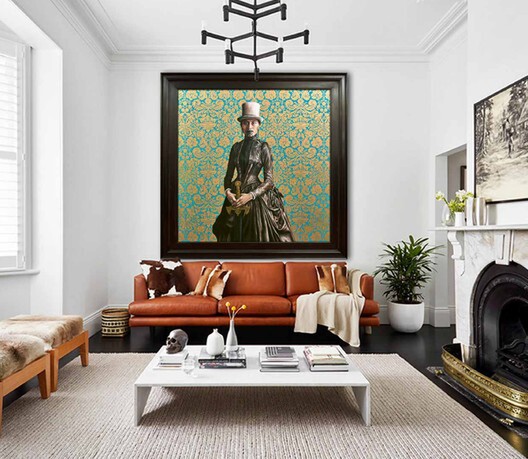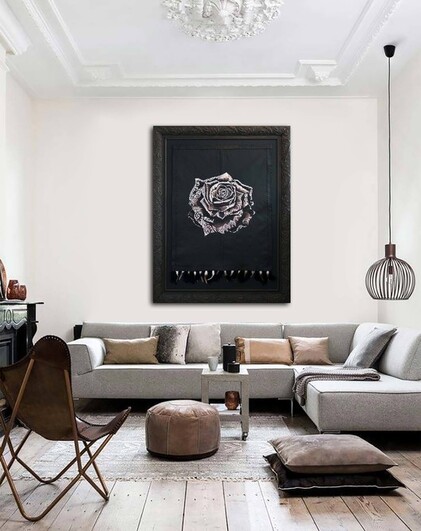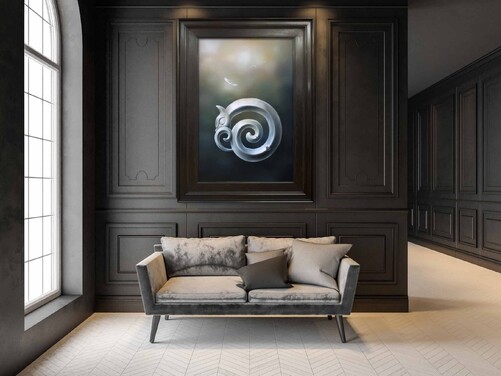Art has the power to transform a room. It can command attention as a dramatic focal point, or it can gently complement the mood and style of the space.
But the way a room is designed also greatly influences the way art is received and appreciated. Certain colours, shapes, and textures can be used and manipulated to perfectly capture an artwork’s story.
Art and interior design marry together to create awe-inspiring places. I chat to interior designer Jilly Greene about how her depth of artistic knowledge influences the way she creates a room.
Art and interior design: where did it all begin?
As a university student in Wellington looking for some extra income, Jilly began working for an art gallery and found herself spellbound by the art world.
Soon she was starting a gallery with a friend at Auckland International Airport, showcasing artwork that captured a cross-section of New Zealand art, from traditional designs to pieces with a modern edge.
After eighteen years Jilly embarked on her own interior design journey with her business, Stage My Home. Jilly creates awe-inspiring spaces that are enhanced by the business’ impressive portfolio of New Zealand art.
“This kind of work keeps me on my toes because you have to allow the furniture and style they have already to shine through your work”
Seeing art from an interior design perspective: How do the two come together when you create a space?
Jilly says her job is to find the soul of a room, and it’s often through art that this soul manifests. While furniture and fittings may be chosen for comfort or design, art is chosen for deeper personal reasons – and that is what makes it special.
In her work, Jilly says the most important thing is to identify what the client needs.
This can be a tough task, she explains, as often a client can’t describe or explain what they want until you provide options – or until they disagree with your ideas!
Explaining the process: what comes first, the art or the space?
Jilly is a rarity in the interior design world because she found art first, whereas usually an interior designer first encounters art when they begin working.
This unique perspective lets her see both the art and interior design in a natural way.
Although Jilly visualises the different pieces, artists, and textures that would best fit in her mind, ultimately it’s about what the client wants.
But often a client needs to truly get the feel of a piece before they know whether it’s right for them, Jilly tells me.
“They take it home and live with it for a night, and that can be huge. People sometimes don’t understand art in space like they see furniture, but as soon as you get art into their place it becomes a room.”
But occasionally Jilly has designed a space so powerfully that the client falls in love with a piece of art they at first rejected. In one instance this resulted in a client purchasing the artwork Jilly used.
“They initially thought the colours would fight but in the end the room was brought together. They ended up being so drawn to the artwork that it brought them to tears.”
While the client’s needs must always come first, awe-inspiring spaces can be created when a client puts their trust in such an art-oriented interior designer.
Do you get inspired by the subject or colours in a piece or do you just find art that works within a room?
Again, the customer’s vision has to come first. Jilly explains that while colours and textures are important, you have to approach the interior with a piece of art that the client loves.
“It won’t feel as good if you approach it like painting-by-numbers.”
Jilly reminds us that fusing art and interior design can put too many heroes in a room, creating unnecessary conflict. Keeping it simple is a philosophy she follows.
What’s the first thing you’d tell someone looking to use art in your space?
“The core thing is that they need to love the artwork.”
Drawing together what the client wants, Jilly says, is a journey in itself that comes with many challenges. Often it takes a few meetings of going through options to figure out whether art is important to the client, then it’s sometimes about compromising between a client and their partner.
It’s a process that is often harder when she has to find art for a room rather than create a room for a piece, but Jilly is always surprised when clients come back to her raving about an artwork she would never have chosen herself.
What about specific spaces, such as the lounge and bedroom, does that influence the artwork you choose or how you craft a space?
Jilly imagines the mood each room should provide, such as the peaceful haven of a bedroom, which she must take care to create as she works.
“Each room has its own place in the house.”
But sometimes an interior designer faces a balancing act of form and function. Jilly talks about a recent challenge she faced designing an open-plan living space. The clients wanted to maintain the openness of the area whilst also clearly identifying a dining space within the room.
Commenting on the progression of interior design in the last 20 years, Jilly notes the growing importance of art in the client’s mind.
“Art has become a part of interior design, as opposed to an afterthought. People go in with an idea of the art and the space.”
What do you love about what you do?
“I love marrying furniture with art, and it puts me on a high at the end of every day when I finish up a room. I love artists that have variety and experiment with many different stories, styles, and genres.”
Perhaps it is this appreciation of the stories within art that allows Jilly to create such inspiring spaces. Walking the line between two creative worlds, Jilly shows us what can be achieved by combining different artistic mediums.




